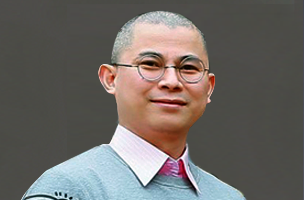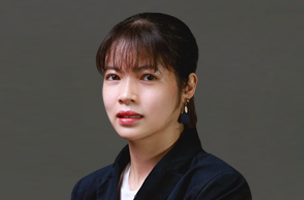Trademark in CAMBODIA
Bud & Prairie are profusely expert and experienced to advise and assist you with trademark related matters.
- Legal Framework
- Law Concerning Marks, Trade Names, and Acts of Unfair Competition (2002): This is the primary legislation governing trademarks in Cambodia. The law covers the registration, protection, and enforcement of trademarks, as well as trade names and actions against unfair competition.
- Prakas and Sub-Decrees: The Ministry of Commerce (MoC) issues additional regulations and guidelines (Prakas) that provide details on the procedures for trademark registration and enforcement.
- Definition of a Trademark
- Trademark: In Cambodia, a trademark is defined as any visible sign capable of distinguishing the goods or services of one enterprise from those of other enterprises. This includes words, names, symbols, designs, letters, numerals, colors, shapes, or any combination of these elements.
- Service Marks: Trademarks that distinguish services, rather than goods, are also protected under Cambodian law.
- Collective Marks: Marks used by a group of enterprises or an association to distinguish their products or services from those of others are recognized and protected as collective marks.
- Criteria for Registration
- Distinctiveness: To be eligible for registration, a trademark must be distinctive, meaning it can clearly distinguish the goods or services of one enterprise from those of others.
- Non-Descriptive: The trademark should not be descriptive of the goods or services it represents (e.g., “Sweet” for sugar). However, descriptive marks may be registered if they have acquired distinctiveness through use.
- Non-Deceptive: The trademark should not be misleading or deceptive regarding the nature, quality, or geographical origin of the goods or services.
- Non-Conflicting: The trademark must not conflict with prior registered trademarks, well-known marks, or other existing rights in Cambodia.
- Trademark Application Process
- Filing: Trademark applications must be filed with the Department of Intellectual Property within the Ministry of Commerce. The application should include:
- A request for registration.
- The applicant’s details.
- A representation of the trademark.
- A list of the goods or services to be covered by the trademark.
- Payment of the required fees.
- Examination: The trademark application undergoes a formal examination to ensure that all requirements are met. If the application passes the examination, it is published in the official gazette for opposition.
- Opposition: After publication, there is a 90-day period during which third parties can oppose the registration of the trademark. If no opposition is filed, or if any opposition is unsuccessful, the trademark proceeds to registration.
- Registration: Once the trademark is registered, the applicant receives a certificate of registration. The trademark is protected from the date of filing.
- Duration of Protection
- Initial Term: A registered trademark in Cambodia is protected for an initial period of 10 years from the filing date.
- Renewal: The trademark can be renewed indefinitely for successive 10-year periods, provided that renewal fees are paid on time. There is a grace period of six months for late renewal, subject to additional fees.
- Trademark Rights and Enforcement
- Exclusive Rights: The owner of a registered trademark has the exclusive right to use the mark in relation to the goods or services for which it is registered. The owner can also prevent others from using identical or confusingly similar marks for related goods or services.
- Infringement: Trademark infringement occurs when an unauthorized party uses a mark that is identical or confusingly similar to a registered trademark, causing a likelihood of confusion among consumers. The trademark owner can take legal action to stop the infringement and seek remedies, including damages.
- Well-Known Marks: Cambodia provides protection for well-known trademarks, even if they are not registered in the country, under certain conditions. This is in line with the Paris Convention and TRIPS Agreement, to which Cambodia is a signatory.
- International Trademark Protection
- Paris Convention: As a member of the Paris Convention, Cambodia allows trademark applicants to claim priority based on an earlier-filed application in another member country, provided the Cambodian application is filed within six months of the original filing.
- Madrid Protocol: Cambodia joined the Madrid Protocol in 2015, allowing trademark owners to seek protection for their marks in multiple countries by filing a single international application through the World Intellectual Property Organization (WIPO). This streamlines the process for obtaining trademark protection in multiple jurisdictions.
- Challenges and Opportunities
- Awareness and Enforcement: While Cambodia has a solid legal framework for trademark protection, awareness among businesses and the public about the importance of trademarks is still developing. Enforcement can be challenging due to limited resources and expertise within the legal system.
- Counterfeiting: Trademark counterfeiting remains a significant issue in Cambodia, particularly in sectors such as luxury goods, pharmaceuticals, and consumer products. Strengthening enforcement mechanisms and increasing cooperation with international partners are key to combating counterfeiting.
- Economic Growth: As Cambodia’s economy continues to grow and attract foreign investment, the importance of trademarks in protecting brand identity and supporting business development is increasing. This creates opportunities for businesses to build and protect their brands in the Cambodian market.
The trademark system in Cambodia is an essential component of the country’s intellectual property regime, providing legal protection for brand identities and helping to ensure fair competition in the marketplace. While there are challenges, particularly in terms of enforcement and public awareness, the legal framework is well-aligned with international standards, offering robust protection for both domestic and foreign trademark owners. As Cambodia continues to integrate into the global economy, the role of trademarks will likely become even more critical in supporting business growth and innovation.
For further information, please do not hesitate to contact us at bud-prairie@bud-prairie.com.
1. Patentability Search
Patentability search is also known as a novelty search, which helps identify whether or not an idea is novel and involves an inventive step (nonobvious). The most complete searches include all types of prior art to give an inventor or organization a comprehensive look at the technology landscape. A patentability search should be completed during the ideation phase, as well as prior to disclosure.
A patentability search is conducted by examining published patents that relate to your own invention to figure out whether your idea has already been patented. You can also see similar inventions, allowing you to improve and refine your own invention without infringing on someone else’s patent. And you can do all this before you have spent many hours and thousands of dollars on an idea that you can’t patent.
2. Freedom to Operate Search
A freedom to operate search (often abbreviated as FTO) determines how similar your product is to existing patents, and therefore how likely you are to infringe on a patent by making and marketing your invention. You may also see this type of search called a patent infringement search or right-to-use search.
Completing an FTO search early in the innovation cycle helps R&D teams design around existing patents. Later on, the results of the search can identify whether you may need to license other patents to bring your product to market.
3. State of the Art Search
Completing a state of the art search (also known as a product clearance or patent landscape search) allows you to examine the literature related to a specific industry, rather than around a certain technology, which may be applicable across industries. Using a state of the art search helps businesses find competitors and existing products within their field. These insights allow researchers, engineers, and leaders to make strategic decisions at any point within the innovation cycle.
4. Invalidity Search
To assess the strength of a specific patent, companies will use an invalidity search. This is also called a validity search. The results of this search determine whether or not the patent holder can claim infringement. They can also be used to decide licensing fees or value. If an invalidity search finds evidence in the form of existing, yet undiscovered, prior art, the patent should not have been granted and is unenforceable. This type of patent search is completed after a patent is granted.
5. Evidence of Use Search
Some organizations actively seek out products that infringe on their patent rights. This type of search is called an evidence of use search. To find these products, an organization or inventor will review similar patents and look for evidence the patent is utilized in a way that infringes on the searcher’s rights. Evidence of use searches happen after a patent is granted and as it matures.
6. Search Database
There are several databases in which patent searching may be done. Many databases such as USPTO, Google Patents, Free Patents Online, esp@cenet etc. are freely available, while other databases such as ThomsonInnovation, Orbit, Patbase etc. are available on the basis of a subscription. Each of these databases varies in terms of at least one of the following: Data Coverage, Search Engine, Interface.
• Google Patent Search Database. The Google search engine has revolutionized how people use the Internet. …;
• Patentscope. Patentscope is a free database put out by the World Intellectual Property Organization (WIPO)…;
• The USPTO Database…;
• Espace European Database…
The following are some of the largest and most popular patent office databases.
• Canadian Patents Database (CIPO)…;
• DEPATISnet (DPMA)…;
• Espacenet (EPO)…;
• JP-PlatPat (JPO)…;
• PatentScope (WIPO)…;
• U.S. Patent Assignment Database (USPTO)…;
• U.S. Patent Center (USPTO)…;
• U.S. Patent Databases (USPTO).
However, an inventor or applicant can also conduct their own patent search. The inventor or applicant has the advantage of often being more familiar with the art to which the invention relates, including having an understanding of the common knowledge held by persons skilled in the art and the relevant terminology.
Patent drafting is a part of how to patent an idea and is the process of writing the patent description and claims. It is at the core of every patent application. When the patent is issued or allowed, the draft serves as the specification part of the document. The patent applicants have to be more aware that depending on how well the complete specification is drafted and how precisely and correctly the claims describe the invention or the imaginary ‘boundary” is set, the easier it will be to defend it against third parties.
Normally, a patent specification covers the following parts:
• Field of Invention: It generally discloses a field to which the invention generally relates.
• Background: It discloses existing devices or methods related to the field of invention, broadly known as prior art. Background generally discloses prior art and limitations or disadvantages associated with the prior art.
• Summary of Invention: It (i) discloses the objectives of the invention, (ii) generally lists distinguishing features and advantages of the invention for which protection is being sought, (iii) summarizes the main features of the invention to be claimed, and (iv) also includes a broader explanation of the invention and briefly mentions the solution provided by the invention.
• Brief Description of Drawings (if any): If the invention includes any drawings, then this section includes a description of the drawing briefly such that a reader can get an overview of what could be disclosed by the drawing. The drawings are to be prepared in separate sheets as per different guidelines of different jurisdictions. The drawing sheets are filed with the patent specification.
• Detailed Description of Invention: It explains the different features of the invention in detail. Detailed description should be written such that a skilled person in the art can understand the invention solely after referring to this description. All claimed features and their interconnections, if any, need to be explained. In other words, all the claimed features need to be well supported in the detailed description.
• Claim(s): Claims are the most important part of a patent draft. Claims decide the scope of the protection which would be awarded to the inventor when the patent is granted. Claims are broadly divided into two categories, independent claim, and dependent claim. Every patent draft or patent application must contain at least one independent claim. Claims tend to change in course of the examination (narrower in most cases than the originally filed claims.
• Abstract: It is a technical summary of the invention. Generally, the Abstract should disclose the invention sufficiently to enable a person to perform a search for anticipation. The publication of a patent application includes publication of the abstract and representative drawing, if any.
• Drawings: Not all specifications have drawings. Such drawings, if any, would be prepared and submitted to the Patent Office in separate sheets. Different jurisdictions have different rules for allowable drawing sheets.
The significance of patent drafting and its impact on the patent protection should be conveyed to the SMEs, start-ups and inventors along with the information on importance of the patent protection in general. They should be informed that in case of any opposition or challenging the validity of their patent by a third party, a poorly drafted patent will be easily invalidated.
An opposition proceeding is an administrative process available under the patent law of many jurisdictions which allows third parties to formally challenge the validity of a pending patent application (pre-grant opposition), of a granted patent (post-grant opposition).
Once the patent application is published, an opposition may be filed within a certain time period prescribed under the applicable law. The opponent shall state the grounds for opposition and submit any evidence. If no opposition is filed during that period, the substantive examination will be carried out.
In the meantime, an applicant for a patent, any of whose claims has been twice rejected, may appeal from the decision of examiners to IP Vietnam, having once paid the fee for such appeal.
LET'S GET STARTED
Please fill in and submit the form for our assistance.




